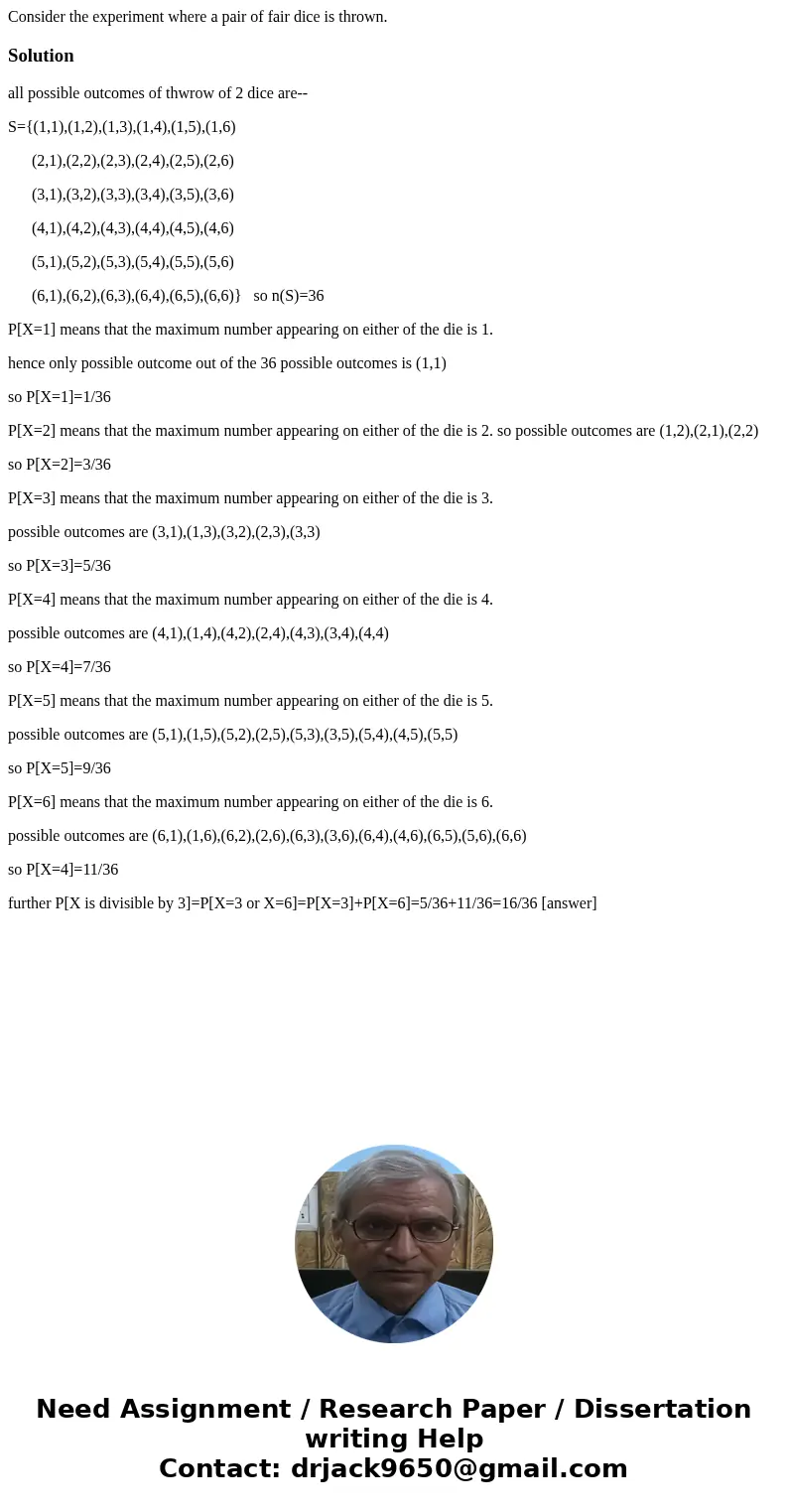Consider the experiment where a pair of fair dice is thrownS
Consider the experiment where a pair of fair dice is thrown.
Solution
all possible outcomes of thwrow of 2 dice are--
S={(1,1),(1,2),(1,3),(1,4),(1,5),(1,6)
(2,1),(2,2),(2,3),(2,4),(2,5),(2,6)
(3,1),(3,2),(3,3),(3,4),(3,5),(3,6)
(4,1),(4,2),(4,3),(4,4),(4,5),(4,6)
(5,1),(5,2),(5,3),(5,4),(5,5),(5,6)
(6,1),(6,2),(6,3),(6,4),(6,5),(6,6)} so n(S)=36
P[X=1] means that the maximum number appearing on either of the die is 1.
hence only possible outcome out of the 36 possible outcomes is (1,1)
so P[X=1]=1/36
P[X=2] means that the maximum number appearing on either of the die is 2. so possible outcomes are (1,2),(2,1),(2,2)
so P[X=2]=3/36
P[X=3] means that the maximum number appearing on either of the die is 3.
possible outcomes are (3,1),(1,3),(3,2),(2,3),(3,3)
so P[X=3]=5/36
P[X=4] means that the maximum number appearing on either of the die is 4.
possible outcomes are (4,1),(1,4),(4,2),(2,4),(4,3),(3,4),(4,4)
so P[X=4]=7/36
P[X=5] means that the maximum number appearing on either of the die is 5.
possible outcomes are (5,1),(1,5),(5,2),(2,5),(5,3),(3,5),(5,4),(4,5),(5,5)
so P[X=5]=9/36
P[X=6] means that the maximum number appearing on either of the die is 6.
possible outcomes are (6,1),(1,6),(6,2),(2,6),(6,3),(3,6),(6,4),(4,6),(6,5),(5,6),(6,6)
so P[X=4]=11/36
further P[X is divisible by 3]=P[X=3 or X=6]=P[X=3]+P[X=6]=5/36+11/36=16/36 [answer]

 Homework Sourse
Homework Sourse